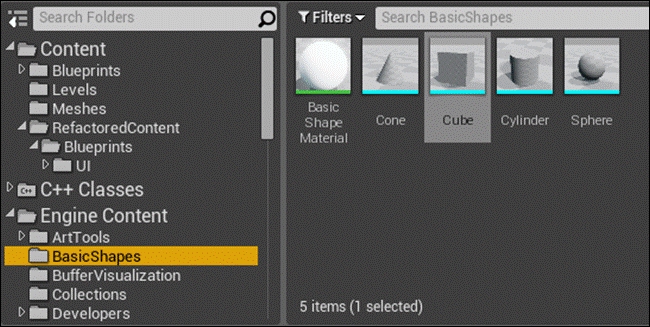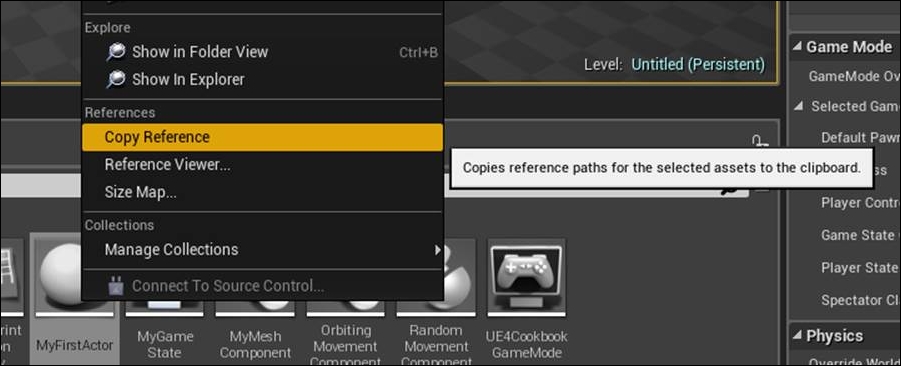In the last recipe, we created a Static Mesh Component, but we didn't try to load a mesh for the Component to display. While it's possible to do this in the Editor, sometimes it is helpful to specify a default in C++.
Follow the previous recipe so you have a custom Actor subclass with a Static Mesh Component ready.
In your Content Browser, click on the View Options button, and select Show Engine Content:

Browse to Engine Content, then BasicShapes to see the Cube we will be using in this recipe.

- Add the following code to the constructor of your class:
auto MeshAsset = ConstructorHelpers::FObjectFinder<UStaticMesh>(TEXT("StaticMesh'/Engine/BasicShapes/Cube.Cube'")); if (MeshAsset.Object != nullptr) { Mesh->SetStaticMesh(MeshAsset.Object); } - Compile, and verify in the Editor that an instance of your class now has a mesh as its visual representation.
- We create an instance of the
FObjectFinderclass, passing in the type of asset that we are trying to load as a template parameter. FObjectFinderis a class template that helps us to load assets. When we construct it, we pass in a string that contains a path to the asset that we are trying to load.- The string is of the format
"{ObjectType}'/Path/To/Asset.Asset'". Note the use of single quotes in the string. - In order to get the string for an asset that already exists in the editor, you can right-click on the asset in the Content Browser and select Copy Reference. This gives you the string so you can paste it into your code.

- We use the
autokeyword, from C++11, to avoid typing out our whole object type in its declaration; the compiler deduces it for us. Withoutauto, we would have to use the following code instead:ConstructorHelpers::FObjectFinder<UStaticMesh> MeshAsset = ConstructorHelpers::FObjectFinder<UStaticMesh>(TEXT("StaticMesh'/Engine/BasicShapes/Cube.Cube'")); - The
FObjectFinderclass has a property calledObjectthat will either have a pointer to the desired asset, or will beNULLif the asset could not be found. - This means that we can check it against
nullptr, and if it isn't null, assign it toMeshusingSetStaticMesh.
..................Content has been hidden....................
You can't read the all page of ebook, please click here login for view all page.
